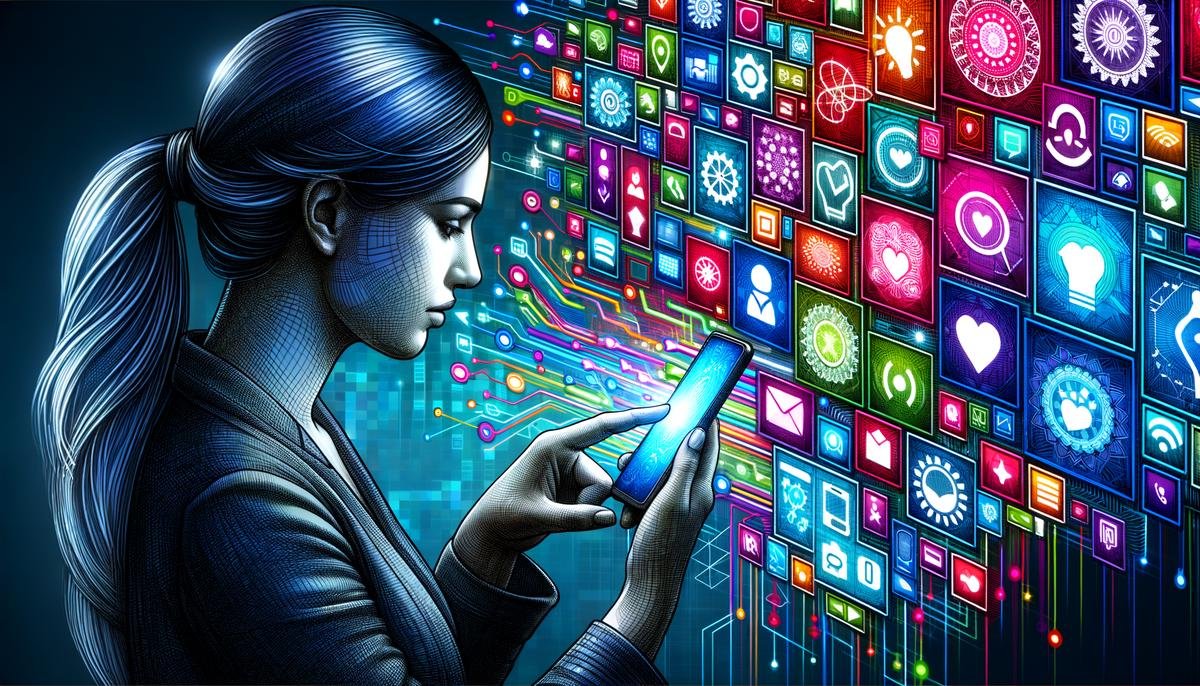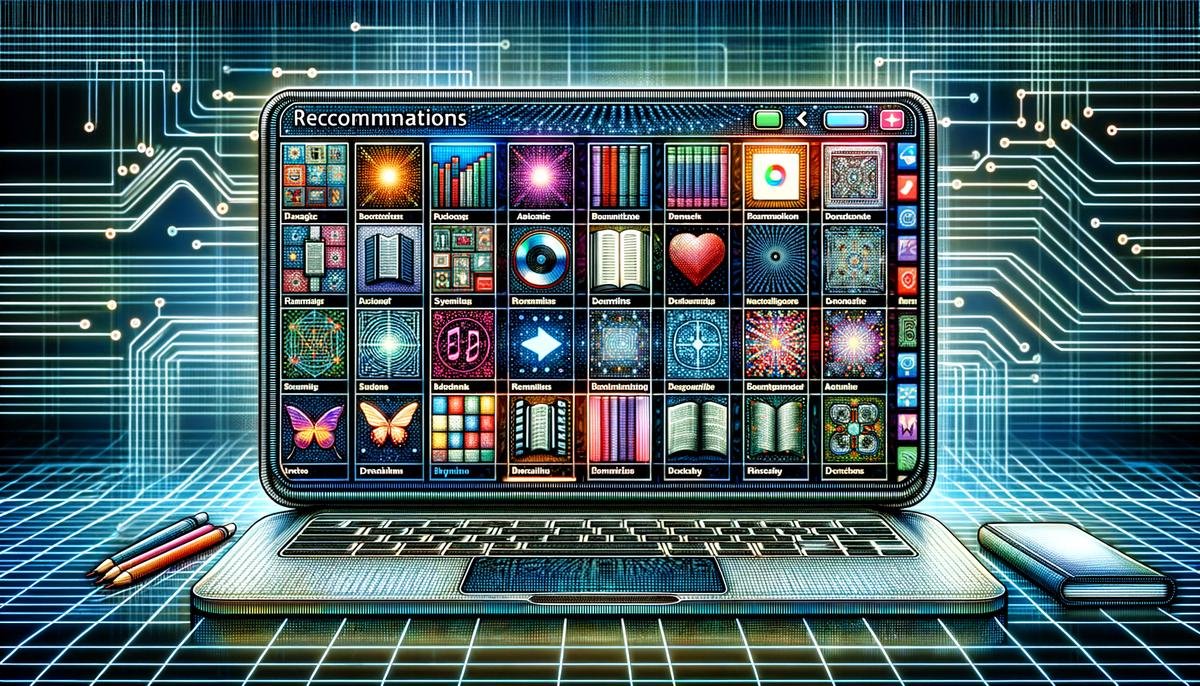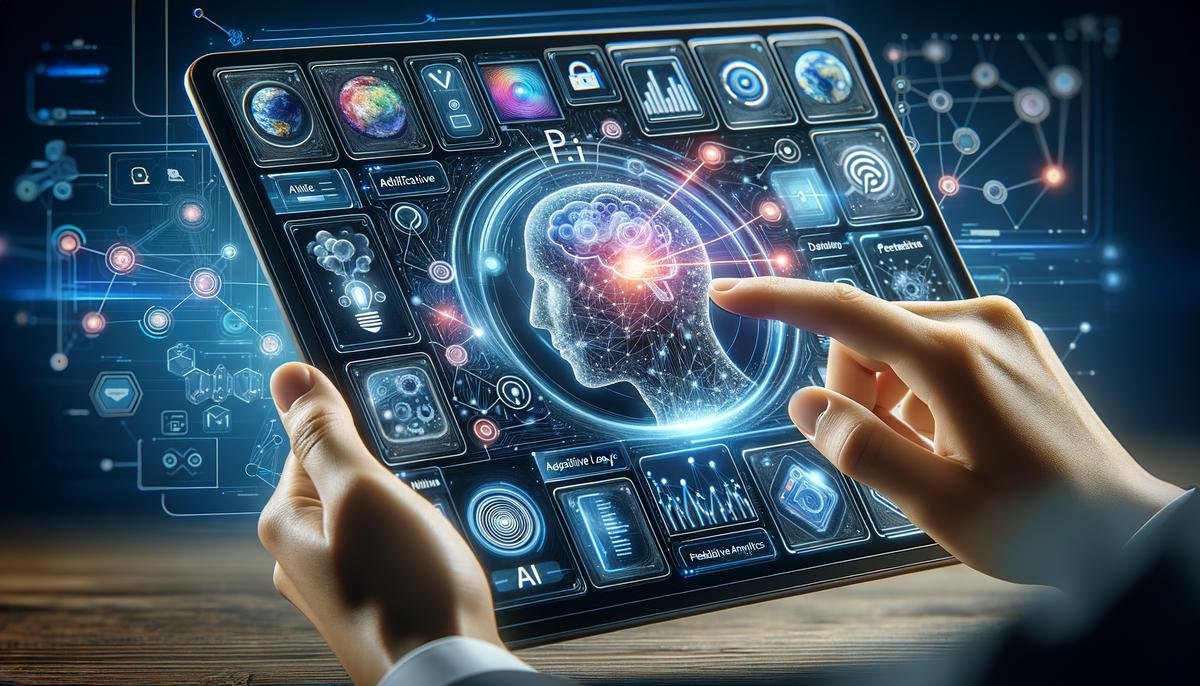The rapid advancement of artificial intelligence (AI) is reshaping the landscape of user experience (UX) design in ways previously unimagined. At the intersection of technology and creativity, AI emerges as a pivotal force, driving the creation of interfaces that are not only more responsive and personalized but also deeply intuitive. This shift towards AI-enhanced design signifies a new era in how we interact with digital environments, promising a future where technology aligns seamlessly with user needs and preferences.
Understanding AI’s Role in Modern UX Design
AI is Revolutionizing User Experience Design
The world of user experience (UX) design is evolving rapidly, thanks to advancements in artificial intelligence (AI). This technology is reshaping how designers think about and create interfaces that are more intuitive and personalized for users.
At the core of this transformation is AI’s ability to analyze vast amounts of data quickly and efficiently. This capability allows for the development of systems that understand user behaviors, preferences, and needs on a deeper level. By leveraging these insights, designers can create interfaces that are not only more user-friendly but also highly customized to individual users.
AI-powered tools are a game-changer in automating repetitive design tasks. This includes generating design elements, testing prototypes, and even predicting user reactions to certain design choices. Such automation frees up designers to focus on more complex and creative aspects of UX design, ultimately speeding up the design process and reducing the likelihood of errors.
Personalization is another area where AI is making a significant impact. AI algorithms can sift through user data to deliver personalized content, recommendations, and features, enhancing user engagement and satisfaction. For instance, streaming services like Netflix use AI to recommend shows and movies based on a user’s viewing history, while e-commerce platforms utilize AI to suggest products tailored to the shopper’s preferences.
Furthermore, AI is enhancing accessibility in UX design, making digital products usable by a wider range of people, including those with disabilities. AI technologies like natural language processing and computer vision are being integrated into designs to support voice commands, read text aloud, and interpret user gestures, thereby creating more inclusive and accessible interfaces.
The integration of conversational AI, such as chatbots and virtual assistants, into digital platforms is transforming user interactions. These AI-driven tools can provide immediate assistance, answer questions, and guide users through complex processes, improving the overall user experience by making it more interactive and responsive.
In conclusion, AI is playing a pivotal role in advancing UX design by enabling more personalized, efficient, and accessible user experiences. As AI technology continues to develop, its influence on UX design is expected to grow, promising even more innovative and user-centric digital products in the future.

AI-Driven Personalization in UX Design
AI has become a cornerstone in crafting bespoke user experiences across digital realms. Now, venturing beyond these realms, the technology refines customer interactions by predicting individuals’ preferences in real-time. This crucial role AI plays is not just about transforming how platforms engage with users but also about seamlessly connecting users with services and content that resonate most deeply with them.
Taking a deep dive into customization, AI stands out in offering tailor-made solutions that cater specifically to users’ unique needs and desires. For instance, streaming services leverage AI to sift through viewing histories, thus accurately suggesting movies and series aligned with users’ tastes. This isn’t a mere shot in the dark but a calculated prediction based on intricate analysis of past preferences, enhancing engagement and user satisfaction.
Moreover, AI’s involvement extends to optimizing the user journey on various platforms. By analyzing click patterns, browsing histories, and interaction data, AI not only predicts the next logical step in the user’s navigation but also identifies potential roadblocks. This preemptive approach ensures a smoother, more intuitive user experience, significantly reducing frustration and increasing platform stickiness.
Furthermore, AI’s role in personalizing experiences goes hand in hand with user security. With cyber threats lurking at every corner of the digital universe, AI steps in as a vigilant protector. It monitors unusual activities or behaviors that could signify potential security breaches, thereby offering personalized security measures. This dual role of enhancing user experience while tightening security layers showcases AI’s unparalleled versatility.
In the landscape of social media, AI’s role in personalizing user interaction takes on a pivotal dimension. Through sophisticated algorithms, platforms analyze users’ interests, engagements, and social interactions. This analysis facilitates the delivery of content and advertisements that not only capture attention but also spark engagement. This not only boosts platform activity but also elevates advertisement effectiveness, creating a win-win scenario for both users and advertisers.
In e-commerce, AI takes personalization a notch higher by offering a virtual personal shopping experience. By understanding previous shopping behaviors, AI can suggest products, predict shopping needs, or even alert users to upcoming sales on preferred items. This level of personalization not only enhances the shopping experience but also fosters a sense of loyalty among customers.
To sum up, AI’s role in personalizing user experience is a game-changer. Moving from a one-size-fits-all approach to a more tailored experience, AI technologies are at the forefront of this transformation. As AI continues to evolve, its capabilities in understanding and predicting user behavior are expected to become even more sophisticated, opening new horizons for personalized digital experiences. This journey towards an AI-driven personalizeation signifies a future where technology knows what you want, sometimes even before you do.

Challenges and Ethical Considerations in AI-UX Integration
As the merging of Artificial Intelligence (AI) with User Experience (UX) design continues to push the boundaries of technology and creativity, it brings along a host of challenges and ethical considerations that cannot be overlooked. The endeavor to create more intuitive and user-centric digital products through AI comes with its own set of complexities.
One primary challenge in integrating AI with UX design lies in ensuring data privacy and security. With AI systems constantly learning from user data to deliver personalized experiences, the amount of sensitive information these systems handle is enormous. The risk of data breaches and misuse of personal information is a pressing concern. UX designers must navigate the fine line between delivering personalized experiences and safeguarding user data against potential threats.
Ethical considerations also play a critical role in AI integration. Bias in AI algorithms is a significant issue. Since AI systems learn from existing data, any inherent biases in this data can lead to unfair or prejudiced outcomes. For instance, an AI-driven recommendation system could inadvertently perpetuate stereotypes or exclude certain groups of users. Ensuring fairness and inclusivity in AI-generated UX necessitates a deliberate effort to identify and correct biases within AI models.
Another challenge is the transparency of AI-driven decisions. As AI technologies become more complex, understanding how they arrive at certain decisions or recommendations can be challenging. Users might find it hard to trust or feel comfortable with AI’s suggestions without a clear understanding of how their data is being used or how decisions that affect their user experience are made. UX designers must find ways to make AI decisions more interpretable and transparent to users, fostering trust and confidence in the technology.
Furthermore, the potential for technology addiction cannot be ignored. By creating highly personalized and engaging experiences, there is a risk that users might become overly dependent on these digital products. While this can be seen as a marker of success in UX design, it raises ethical questions about the role of designers in encouraging balanced interaction with technology.
Lastly, as AI continues to automate many aspects of UX design, there is a concern about the diminishing role of human creativity and intuition in the design process. While AI can handle repetitive tasks and even generate creative solutions, the unique insight and empathy that human designers bring to the table are irreplaceable. Balancing the benefits of AI automation with the value of human touch is a challenge that will define the future of UX design.
In conclusion, integrating AI with UX design opens up a world of possibilities for creating more personalized, engaging, and intuitive digital experiences. However, it also presents a multitude of challenges and ethical considerations that designers must address. Balancing the benefits of AI with concerns about data privacy, algorithmic bias, transparency, technology addiction, and the preservation of human creativity will be crucial in shaping the future of user-centric design.

The Future of AI in Enhancing UX Design
Looking ahead, the fusion of Artificial Intelligence (AI) and User Experience (UX) design unfolds a new chapter in crafting digital experiences. Beyond just understanding user behavior and personalizing experiences, AI’s evolving role promises to redefine interactive design in profound ways. The forthcoming era of AI in UX design is poised to bring advancements that could further streamline design processes, enhance user engagement, and ensure more inclusive digital environments.
In the realm of design optimization, AI is anticipated to bring a level of precision in understanding user engagement metrics, enabling designers to make data-driven decisions with unmatched accuracy. This evolution could lead to the creation of interfaces that adapt in real-time, not just to the preferences of the user, but also to their current emotional state or context, providing a truly intuitive user experience.
Moreover, as AI technologies become more sophisticated, their application in enhancing the emotional intelligence of digital products is set to expand. Imagine platforms that not only recognize your needs based on past interactions but also anticipate your future desires and concerns, adjusting content, tone, and interaction accordingly. This level of empathy in digital design could revolutionize the way users connect with technology, making digital interactions feel more human and less transactional.
The personalization capabilities of AI are also expected to advance significantly, especially in tailoring user interactions across different cultural and linguistic backgrounds. This holds the potential to democratize access to technology, ensuring that digital products are not just inclusive but are genuinely designed for a global audience. Through AI, UX design can overcome language barriers and cultural nuances, making every digital interaction feel local and personalized.
On the security front, AI is predicted to become a pivotal ally in creating safer digital environments. By leveraging predictive modeling and anomaly detection, AI could identify and neutralize threats before they reach the user, ensuring a secure experience without compromising the user experience. This heightened security measure could build stronger trust between users and digital platforms, encouraging more open and fearless exploration of the digital space.
Lastly, the synergy between AI and UX design might lead to the exploration of uncharted territories, like augmented reality (AR) and virtual reality (VR), to create immersive experiences previously thought impossible. These platforms could benefit from AI-driven design to create more realistic, interactive environments that understand and adapt to user interactions in real time, opening new frontiers in entertainment, education, and beyond.
As we stand on the brink of these advancements, it’s essential to navigate the future with a balanced perspective. The integration of AI in UX design brings not only opportunities but also challenges, particularly in ensuring that technology remains an extension of human creativity and empathy, not a replacement. The future of AI in UX design is not just about smarter algorithms and more personalized experiences; it’s about crafting digital interactions that resonate on a human level, fostering connections that transcend the digital divide. As we move forward, the goal remains clear: to harness the power of AI in creating designs that are not only innovative but also inclusive, secure, and profoundly human.

As we look to the horizon of user experience design, it is evident that AI will play an increasingly central role in bridging the gap between digital interfaces and human interaction. The potential for creating designs that truly understand and anticipate the user’s needs offers an exciting promise of digital environments that are not only more engaging and personalized but also profoundly inclusive and secure. With the power of AI, the future of UX design holds the promise of designing not just for users but with a deep understanding of what it means to be human in a digital world.




